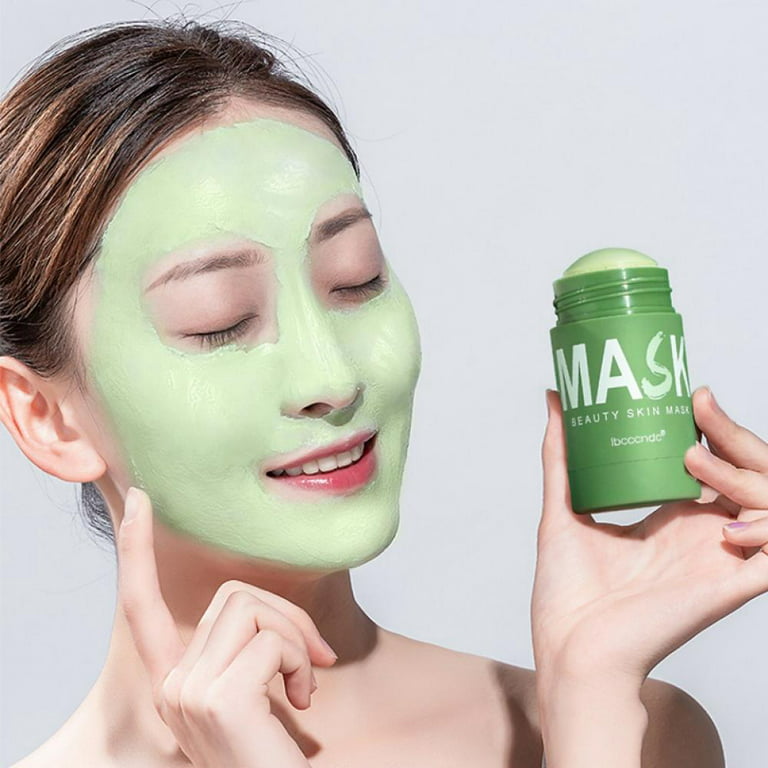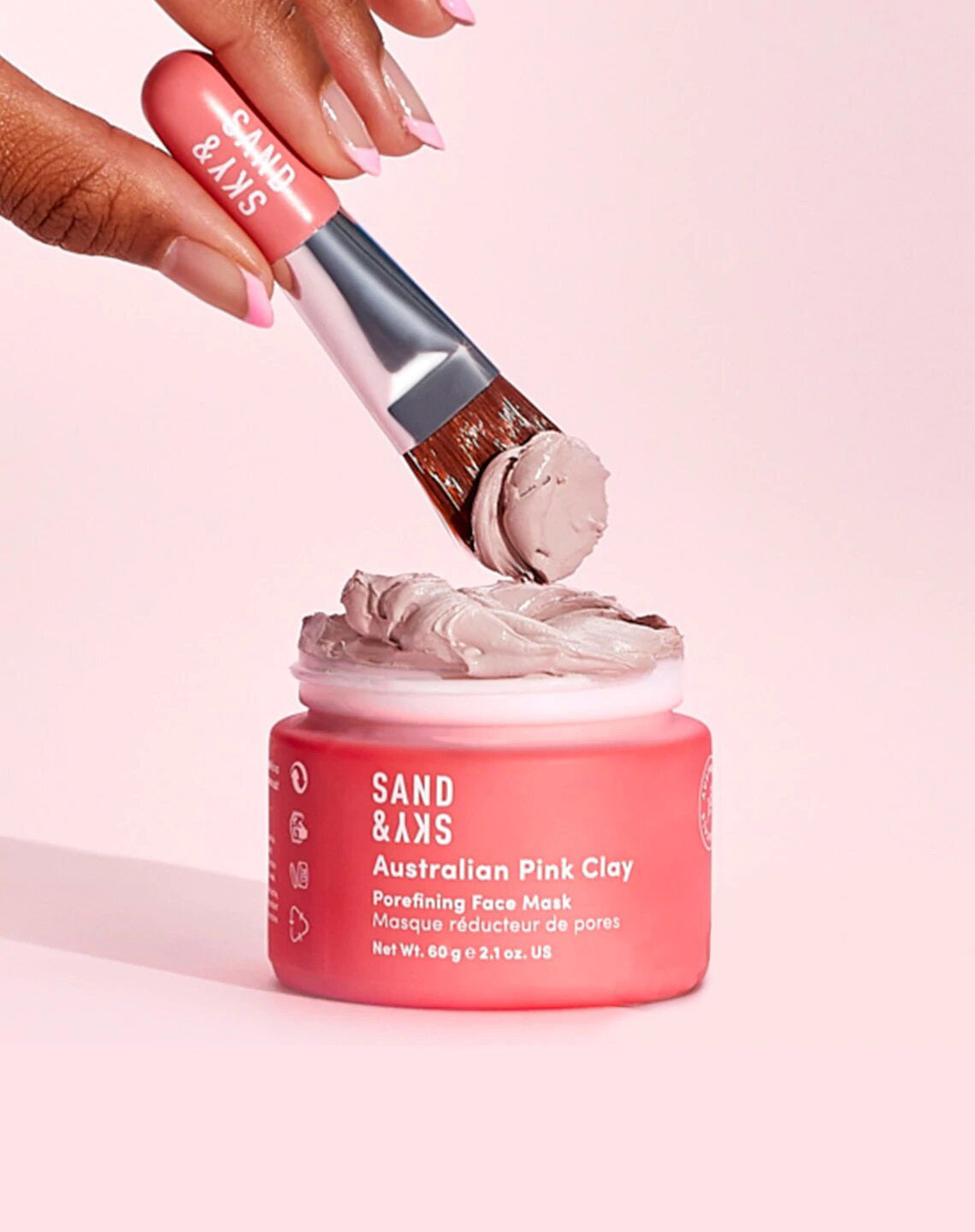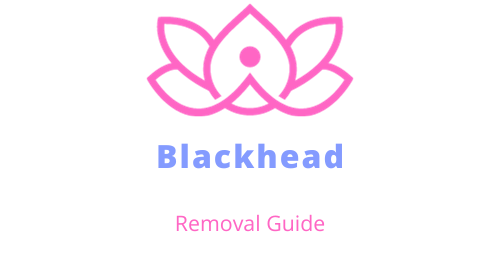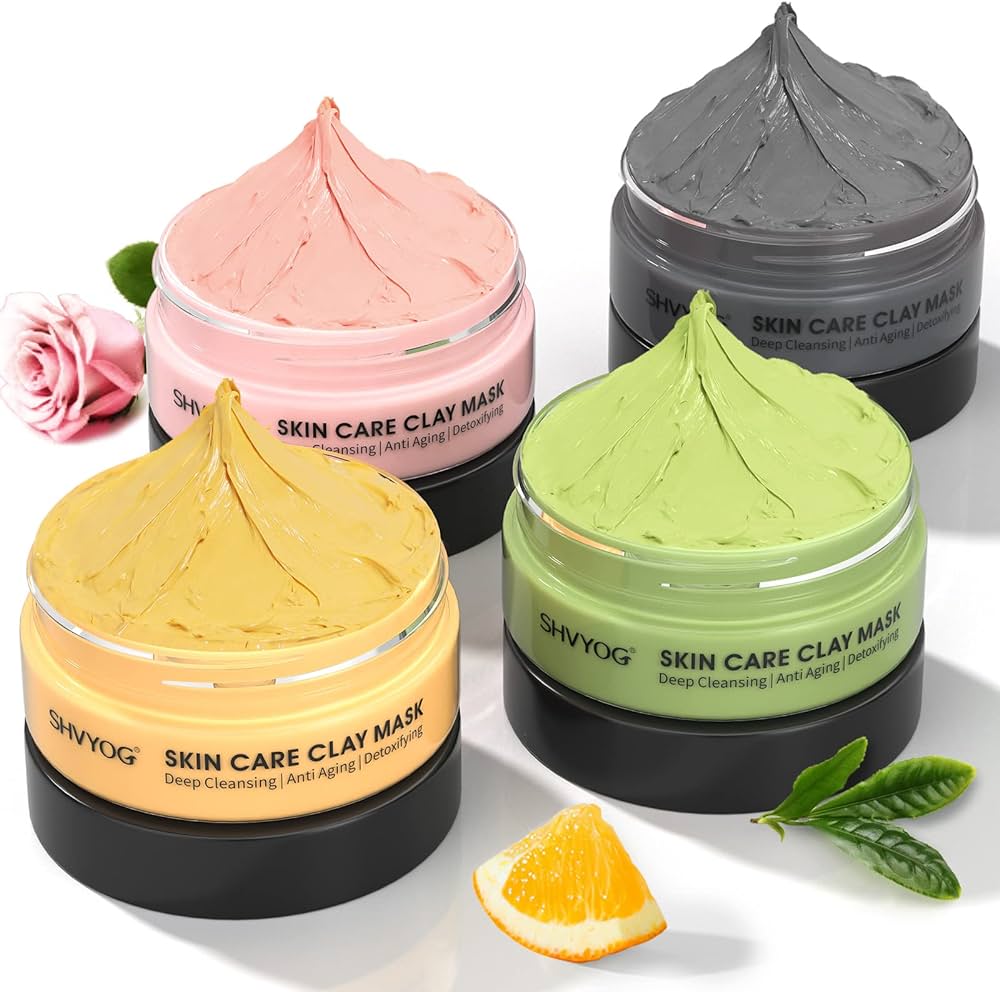Clay face masks deeply cleanse the skin and absorb excess oil. They help in reducing acne and improving skin texture.
Clay face masks have become a staple in skincare routines due to their numerous benefits. These masks are known for their ability to draw out impurities, making them ideal for oily and acne-prone skin. They contain natural minerals that help detoxify and rejuvenate the skin.
Regular use can lead to clearer, smoother, and more radiant skin. Different types of clay, such as bentonite, kaolin, and French green clay, offer specific benefits tailored to various skin concerns. Incorporating a clay mask into your weekly skincare routine can provide a much-needed deep cleanse, leaving your skin feeling refreshed and revitalized.

Credit: www.walmart.com
The Magic Of Clay For Your Skin
Clay face masks have been a part of skin care for centuries. They are known for their amazing benefits. Clay can detoxify the skin, absorb excess oil, and improve the complexion. Let’s dive into the magic of clay for your skin.
Types Of Clay Used In Skin Care
There are several types of clay used in skin care. Each type offers unique benefits. Here are some of the most common types:
- Bentonite Clay: This clay is great for oily skin. It helps to remove impurities and excess oil.
- Kaolin Clay: This is a gentle clay, perfect for sensitive skin. It helps to cleanse and exfoliate without irritation.
- French Green Clay: Known for its detoxifying properties, it is ideal for acne-prone skin.
- Rhassoul Clay: This clay is rich in minerals. It helps to improve skin texture and elasticity.
Why Clay Is Beneficial For The Skin
Clay offers multiple benefits for the skin. Here are some reasons why clay masks are so effective:
- Detoxification: Clay helps to draw out toxins from the skin. This leaves your skin feeling clean and refreshed.
- Oil Absorption: Clay absorbs excess oil. This makes it ideal for oily and acne-prone skin types.
- Exfoliation: Clay gently exfoliates dead skin cells. This promotes a smoother and brighter complexion.
- Mineral Enrichment: Clay is rich in minerals. These minerals help to nourish and rejuvenate the skin.
Clay face masks can be a great addition to your skin care routine. They are natural, effective, and suitable for various skin types. Embrace the magic of clay and enjoy healthier, glowing skin.
Choosing The Right Clay Mask
Choosing the right clay mask can be a game-changer for your skin care routine. The right clay mask helps in detoxifying, brightening, and balancing your skin. This section guides you through the essential factors to consider and helps you select the best clay mask for your skin type.
Factors To Consider
Here are some key factors to keep in mind while selecting a clay mask:
- Skin Type: Different clays work best for different skin types.
- Ingredients: Check for natural and non-irritating ingredients.
- Skin Concerns: Address specific issues like acne, dryness, or dullness.
- Frequency of Use: Some masks are gentle enough for daily use, others are not.
Clay Masks For Different Skin Types
Choosing a clay mask tailored to your skin type ensures optimal results. Here’s a quick guide:
| Skin Type | Recommended Clay | Benefits |
|---|---|---|
| Oily | Bentonite Clay | Absorbs excess oil and unclogs pores |
| Dry | Kaolin Clay | Gentle, does not strip natural oils |
| Sensitive | Pink Clay | Soothing and calming |
| Acne-Prone | Green Clay | Detoxifies and fights acne |
Oily Skin: Bentonite clay is perfect for oily skin. It absorbs excess oil and unclogs pores.
Dry Skin: Kaolin clay works best for dry skin. It is gentle and does not strip the skin of its natural oils.
Sensitive Skin: Pink clay is ideal for sensitive skin. It is soothing and calming.
Acne-Prone Skin: Green clay helps with acne-prone skin. It detoxifies the skin and fights acne.
The Science Behind Clay Masks
Clay face masks are ancient beauty secrets. They offer numerous benefits for the skin. Their popularity has surged due to their effectiveness.
How Clay Masks Cleanse And Detoxify
Clay masks are known for their deep cleansing properties. They work by absorbing excess oil and impurities from the skin. This helps to unclog pores and prevent breakouts. The negative ions in clay attract the positive ions found in toxins and impurities. This creates a natural magnet effect, pulling out dirt and pollutants.
Different types of clay have unique benefits:
- Bentonite Clay: Highly absorbent, great for oily skin.
- Kaolin Clay: Gentle, suitable for sensitive skin.
- French Green Clay: Rich in minerals, ideal for revitalizing skin.
Regular use of clay masks can lead to clearer, healthier skin. The detoxifying process also boosts skin radiance.
Clay Masks And Pore Minimization
Large pores can be a cosmetic concern for many. Clay masks help reduce the appearance of pores. They work by tightening the skin and removing trapped impurities.
Here is a table showing how different clays help in pore minimization:
| Type of Clay | Benefits for Pores |
|---|---|
| Bentonite Clay | Draws out deep-seated impurities, reduces pore size. |
| Kaolin Clay | Gently exfoliates, minimizes pores. |
| Rhassoul Clay | Tightens skin, shrinks pores. |
Incorporating clay masks into your skincare routine can lead to smoother, tighter skin. Consistent use results in visibly smaller pores.

Credit: www.fresh.com
Application Tips For Maximum Benefits
Clay face masks offer numerous benefits for your skin, from deep cleansing to soothing inflammation. To get the most out of your clay mask, it’s essential to apply it correctly. Follow these application tips to maximize the benefits of your clay face mask.
Preparing Your Skin For A Clay Mask
Preparation is key to achieving the best results. Follow these steps to prepare your skin:
- Cleanse your face: Use a gentle cleanser to remove dirt, oil, and makeup.
- Exfoliate: Gently exfoliate your skin to remove dead cells. This helps the mask penetrate deeper.
- Steam: Use a warm towel or facial steamer to open your pores for better absorption.
Steps For Applying A Clay Mask
Follow these steps to apply your clay mask effectively:
- Apply evenly: Use a brush or your fingers to apply a thin layer of the mask. Avoid the eye and lip areas.
- Let it sit: Allow the mask to dry for 10-15 minutes. Feel free to relax during this time.
- Rinse off: Use lukewarm water and a soft cloth to gently remove the mask. Pat your face dry with a clean towel.
- Moisturize: Finish with a hydrating moisturizer to lock in moisture and soothe your skin.
By following these steps, you can ensure your clay face mask delivers maximum benefits for your skin.
Common Mistakes To Avoid
Clay face masks are popular for their detoxifying and purifying benefits. Yet, many people make mistakes that can harm their skin. Let’s explore the common pitfalls and how to avoid them.
Overuse Of Clay Masks
Using clay masks too often can damage your skin. Clay masks are powerful and should be used sparingly.
Here are some guidelines to help you:
- Use clay masks once or twice a week.
- Follow the instructions on the product label.
- Listen to your skin. If it feels dry or tight, reduce usage.
Overusing clay masks can strip your skin of natural oils. This can lead to dryness, irritation, and breakouts. Your skin needs its natural oils to stay healthy.
Ignoring Skin Irritation
Ignoring skin irritation is a common mistake. It can lead to serious skin issues. Always pay attention to your skin’s signals.
If you experience any of the following, stop using the mask immediately:
- Redness
- Burning sensation
- Excessive dryness
- Itching
Ignoring these signs can worsen your skin’s condition. Here are steps to take if irritation occurs:
| Step | Action |
|---|---|
| 1 | Stop using the clay mask. |
| 2 | Rinse your face with cool water. |
| 3 | Apply a soothing moisturizer. |
| 4 | Consult a dermatologist if the irritation persists. |
Your skin’s health is important. Always be cautious and attentive when using clay masks.

Credit: www.sandandsky.com
Enhancing Your Clay Mask Experience
Clay masks offer many benefits for the skin. To maximize these benefits, you can enhance your clay mask experience. This involves adding certain ingredients, using multiple masks, and more. Let’s explore these methods to get the most out of your clay mask routine.
Additives To Boost Your Mask’s Power
Enhance your clay mask by adding natural ingredients. Here are some common additives:
- Honey: Adds moisture and fights bacteria.
- Tea Tree Oil: Helps reduce acne and inflammation.
- Aloe Vera: Soothes and hydrates the skin.
- Apple Cider Vinegar: Balances skin’s pH levels.
Mixing these additives with your clay mask can provide extra benefits. Use them according to your skin type and needs.
Combining Masks For Multi-masking
Multi-masking involves using different masks on various parts of your face. This targets specific skin issues. Here’s a simple guide:
| Face Area | Recommended Mask |
|---|---|
| T-Zone | Charcoal or Bentonite Clay Mask |
| Cheeks | Hydrating Gel Mask |
| Under-Eye | Brightening Mask |
Combining masks allows you to treat different skin concerns at once. This method saves time and provides a balanced skincare routine.
Post-mask Skin Care Ritual
Using a clay face mask can deeply cleanse and purify your skin. But what you do after removing the mask is crucial. Proper post-mask skin care ensures your skin remains healthy, hydrated, and glowing.
Moisturizing After A Clay Mask
Clay masks can draw out impurities and excess oil, leaving your skin feeling dry. It is essential to moisturize immediately after removing the mask.
Choose a moisturizer with hydrating ingredients like hyaluronic acid, glycerin, or aloe vera. These ingredients help lock in moisture and restore your skin’s natural barrier.
Here’s a simple post-mask moisturizing routine:
- Pat your face dry with a soft towel.
- Apply a hydrating toner or essence.
- Follow with a lightweight serum.
- Finish with a rich moisturizer.
Soothing The Skin
Clay masks can sometimes leave your skin feeling sensitive or irritated. To soothe your skin, use products with calming ingredients such as chamomile, calendula, or green tea extract.
Consider the following steps for soothing your skin:
- Rinse off the mask with lukewarm water.
- Apply a soothing face mist or spray.
- Use a calming serum or ampoule.
- Finish with a gentle moisturizer.
Here’s a table of recommended soothing ingredients:
| Ingredient | Benefits |
|---|---|
| Chamomile | Reduces redness and inflammation |
| Calendula | Soothes and heals irritated skin |
| Green Tea Extract | Provides antioxidants and reduces irritation |
Real Results: Testimonials And Success Stories
Discover the real-life transformations achieved through clay face masks. Read testimonials and success stories that showcase the effectiveness of these skincare products. See how users have experienced clearer, healthier skin after incorporating clay masks into their routines.
Before And After Transformations
Many users have shared their before and after photos to highlight the dramatic improvements in their skin. These images provide visual proof of the power of clay masks. Witness the reduction in acne, smaller pores, and a brighter complexion.
| Before | After | Timeframe |
|---|---|---|
 |
 |
4 Weeks |
 |
 |
6 Weeks |
User Experiences And Recommendations
Users have shared their positive experiences with clay masks. They often recommend specific products and tips. Here are some of their stories:
- Sarah: “I used a clay mask twice a week. My skin feels so soft and looks clear.”
- John: “The mask helped reduce my acne significantly. I recommend using it regularly.”
- Emily: “I love how my skin glows after using the clay mask. It’s now part of my routine.”
These testimonials provide valuable insights and recommendations. They help others make informed decisions. Below are more user experiences:
- Alice: “I followed the instructions carefully. My skin is now less oily.”
- Mike: “The mask was easy to apply. I noticed fewer blackheads after a month.”
- Laura: “I tried several masks. The clay mask gave me the best results.”
These success stories highlight the effectiveness of clay masks. They show how they can improve skin health and appearance.
Frequently Asked Questions
Are Clay Face Masks Good For Your Skin?
Yes, clay face masks are good for your skin. They absorb excess oil, remove impurities, and tighten pores. Regular use can improve skin texture and clarity.
Which Clay Is Best For A Face Mask?
Bentonite clay is best for oily skin, while kaolin clay suits dry and sensitive skin. French green clay works for combination skin.
When To Put A Clay Mask In A Skincare Routine?
Apply a clay mask after cleansing and before moisturizing, 1-2 times a week. Use it on clean, dry skin.
How Often Should You Do A Clay Face Mask?
Use a clay face mask 1-2 times per week. This helps cleanse pores and absorb excess oil. Adjust frequency based on skin type.
Conclusion
Clay face masks offer numerous benefits for healthy, glowing skin. They help detoxify pores, reduce acne, and improve skin texture. Incorporating these masks into your skincare routine can lead to visible improvements. For best results, choose a mask suited to your skin type and use it regularly.
Enjoy clearer, more radiant skin.

